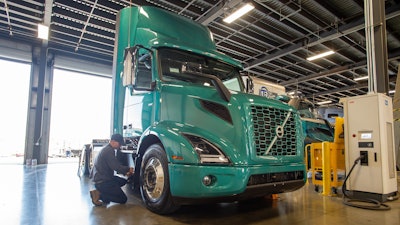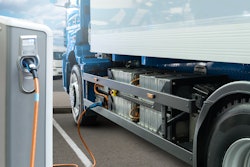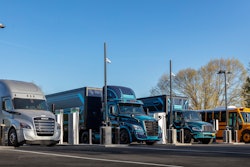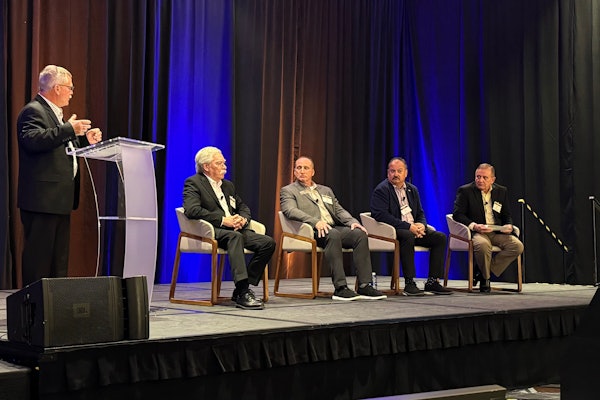
Dealers and service providers that intend to support alternative powertrains and electric vehicles (EV) should prepare to invest in facility upgrades. Retrofitting an existing service shop can be costly — particularly older buildings.
American Truck Dealers’ Chairman Scott McCandless believes the investment required to make a shop EV service capable is an overlooked aspect of alternative power adoption. Allocating resources into a facility to support a small market segment with uncertain growth potential and lower fixed operations revenue potential is not an easy business decision to make. He says ATD is working to convey that message to state and federal regulators, both with hopes of throttling down the pace at which zero-emission vehicle (ZEV) regulations go into effect and to illuminate the importance of financial incentive and support programs for dealers to speed adoption.
McCandless says during an event this summer, ATD welcomed EPA regulators to an existing dealer facility and “made it our mission to walk them through an [internal combustion engine] facility and show them how we do business … We need to talk about the implications of creating EV service capabilities for dealers.”
Acquiring electrical capacity to support 480V 3 phase power fast charging and chargers is challenging enough as it is, he says. When also factoring in the need to raise the service facilities’ roof height to accommodate lifting the EV to access the batteries, crane and bay isolation requirements expected for EV bays, renovating a building to support EV service can be become very costly, very fast.
“I’ve talked to dealers who have estimates that it could cost them up to $1 million,” he says.
(For more on charging, see our article “What it takes to install charging infrastructure.”)
Clearance height and bay isolation are among the most important traits of an EV service bay.
McCandless says dealers need to be able to raise a truck six feet above the ground to safely remove and service the batteries. Dealers with shops that were recently constructed or already support natural gas service may have roof levels high enough to meet these requirements. But older buildings and diesel-only locations aren’t always as fortunate. And due to their extreme weight, battery packs must be lifted by overhead cranes, which adds even more necessary clearance space.
“Raising the roof on a building is a major reconstruction,” says McCandless.
Bay position matters too. EV service should be conducted in isolated, low-traffic areas.
Manufacturers recommend using bays farthest away from a service counter and the rest of a dealership. This remoteness is valuable for several reasons. The seclusion reduces the chances an associate (or customer) who is not a certified EV technician comes in contact with a truck during a service event. It also makes it less likely safety barriers and stanchions required to isolate an EV bay from others will impede other technicians. And finally, putting an EV bay near a facility wall makes it easier to support truck charging within the facility.
Large, high-kilowatt chargers used to fully replenish a depleted battery between use should be located outside. But smaller mobile chargers can be used within a service facility to ensure trucks in the midst of a service event can be charged to be moved or tested. Isolating EV service within a shop keeps those chargers within reach of their power source.
“Charging is a tool. It’s no different than a lift. It’s necessary for service,” says John Waterman, energy services manager at ETHERO Truck + Energy.
Other necessary tools required in a service bay include insulated hand tools, EV-specific diagnostic tools and personal protection equipment (PPE) for technicians. Each OEM has a required a recommended tool list it provides dealers who are working to become EV proficient.
Keep up with our special report on trucking's transition to cleaner trucks:
Part I: This isn't trucking's first fueling and propulsion revolution
Part II: Why are we doing this?
Part III: What constitutes as ‘alternative power’?
Part IV: What will drive — or inhibit — alternative power adoption?
Part V: Performing an alternative power market analysis
Part VI: What it takes to install charging infrastructure
Part VII: Training on alternative powertrains vital to employee safety, business success
Part IX: Making the case: How to effectively sell alternative power
Part X: Safety in the Service Bay
Part XI: How electric trucks may transform dealer revenue streams










